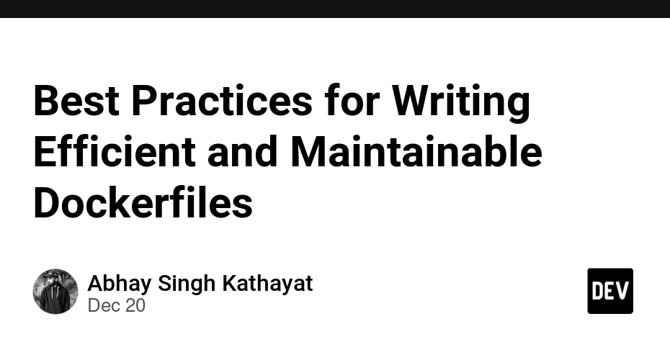Dev
5d
20

Image Credit: Dev
Best Practices for Writing Efficient and Maintainable Dockerfiles
- A well-crafted Dockerfile is essential for creating efficient, secure, and maintainable Docker images.
- Start with a minimal base image to reduce the size of the final Docker image.
- Docker caches each layer of the image during the build process. To optimize build time, place instructions that change less frequently at the top of your Dockerfile and more frequently changing instructions towards the bottom.
- Always aim to install only the packages necessary for your application to function.
- Each Dockerfile instruction creates a new image layer. The more layers there are, the larger the image becomes, and the slower the build process is. Try to consolidate multiple commands into fewer layers.
- Similar to .gitignore for Git, .dockerignore is used to prevent unnecessary files from being copied into your Docker image, which can reduce the image size and improve build speed.
- Multi-stage builds allow you to separate the building of your application from the final image, which helps you produce smaller, cleaner images.
- Avoid using the latest tag for base images, as it can lead to unpredictable behavior when base images are updated.
- Running containers as root is a security risk. It’s recommended to use a non-root user inside the container to reduce the impact of potential vulnerabilities in the containerized application.
- Set environment variables explicitly in the Dockerfile using the ENV instruction.
Read Full Article
1 Like
For uninterrupted reading, download the app